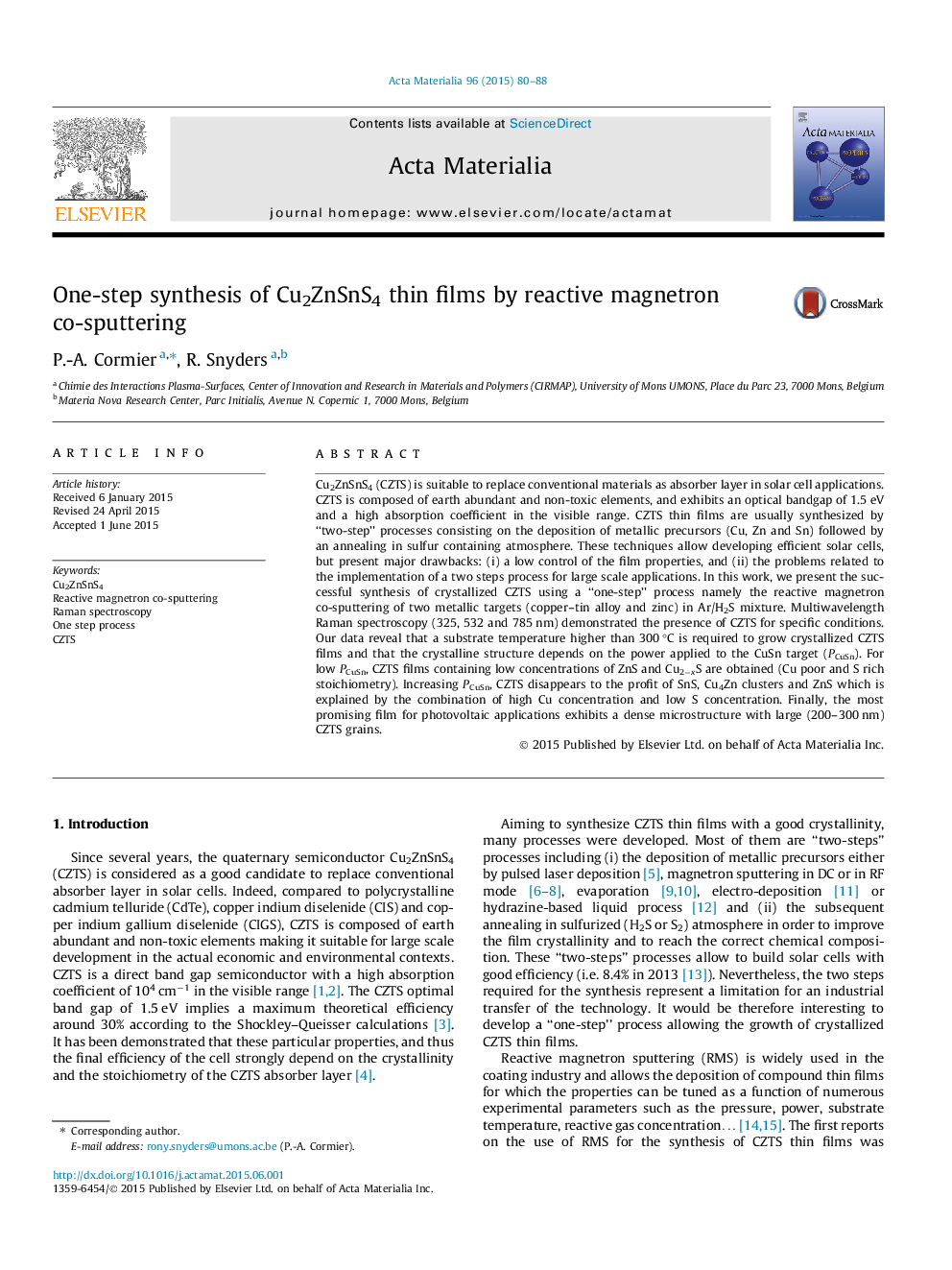| Article ID | Journal | Published Year | Pages | File Type |
|---|---|---|---|---|
| 7879650 | Acta Materialia | 2015 | 9 Pages |
Abstract
Cu2ZnSnS4 (CZTS) is suitable to replace conventional materials as absorber layer in solar cell applications. CZTS is composed of earth abundant and non-toxic elements, and exhibits an optical bandgap of 1.5 eV and a high absorption coefficient in the visible range. CZTS thin films are usually synthesized by “two-step” processes consisting on the deposition of metallic precursors (Cu, Zn and Sn) followed by an annealing in sulfur containing atmosphere. These techniques allow developing efficient solar cells, but present major drawbacks: (i) a low control of the film properties, and (ii) the problems related to the implementation of a two steps process for large scale applications. In this work, we present the successful synthesis of crystallized CZTS using a “one-step” process namely the reactive magnetron co-sputtering of two metallic targets (copper-tin alloy and zinc) in Ar/H2S mixture. Multiwavelength Raman spectroscopy (325, 532 and 785 nm) demonstrated the presence of CZTS for specific conditions. Our data reveal that a substrate temperature higher than 300 °C is required to grow crystallized CZTS films and that the crystalline structure depends on the power applied to the CuSn target (PCuSn). For low PCuSn, CZTS films containing low concentrations of ZnS and Cu2âxS are obtained (Cu poor and S rich stoichiometry). Increasing PCuSn, CZTS disappears to the profit of SnS, Cu4Zn clusters and ZnS which is explained by the combination of high Cu concentration and low S concentration. Finally, the most promising film for photovoltaic applications exhibits a dense microstructure with large (200-300 nm) CZTS grains.
Related Topics
Physical Sciences and Engineering
Materials Science
Ceramics and Composites
Authors
P.-A. Cormier, R. Snyders,
